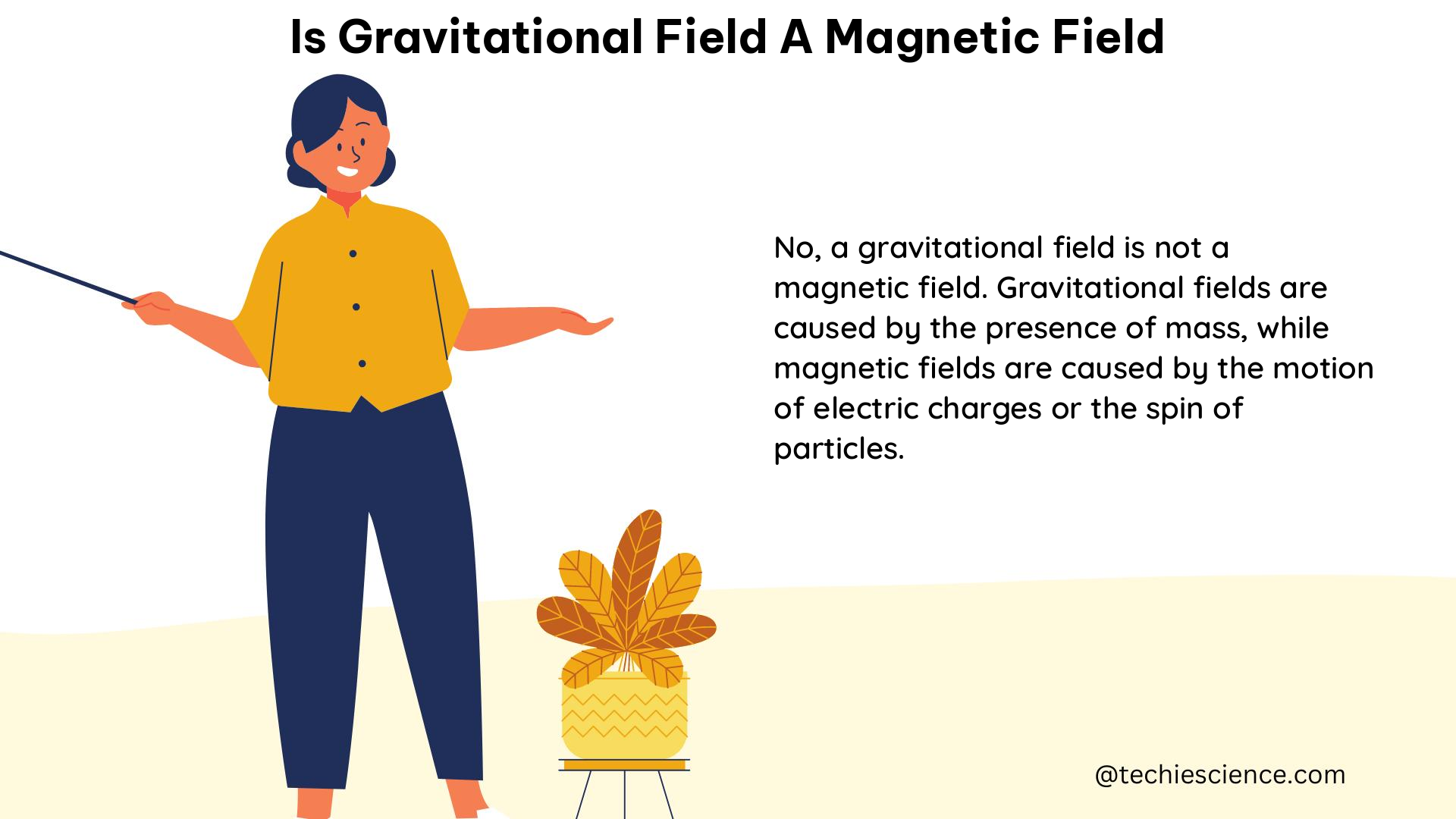The concept of a gravitational field being a magnetic field is not supported by current scientific understanding. While both gravity and magnetism are fundamental forces of nature, they have distinct properties and behaviors that make them separate and distinct phenomena.
Understanding Gravity and Magnetism
Gravity is a force that attracts two objects towards each other, regardless of their magnetic properties. It is a universal force that acts on all matter, including those without any magnetic properties. The strength of the gravitational force is directly proportional to the masses of the objects and inversely proportional to the square of the distance between them, as described by Newton’s law of universal gravitation.
On the other hand, magnetism is a force that attracts or repels objects based on their magnetic properties. Magnetic fields are created by the motion of electric charges, and they can either attract or repel other magnetic objects, depending on the orientation of their magnetic poles. Magnetism only affects objects with magnetic properties, such as iron, nickel, or cobalt.
Theoretical Differences

Gravity is described by the theory of general relativity, which was developed by Albert Einstein in the early 20th century. This theory explains gravity as a consequence of the curvature of spacetime, where massive objects distort the fabric of spacetime, and other objects move in response to this distortion.
Magnetism, on the other hand, is described by the theory of electromagnetism, which was developed by James Clerk Maxwell in the 19th century. This theory explains magnetism as a result of the motion of electric charges, and it describes the relationship between electric and magnetic fields.
Quantifiable Differences
The strength of a magnetic field can be measured in units of Tesla (T) or Gauss (G), while the strength of a gravitational field can be measured in units of Newtons per kilogram (N/kg) or acceleration due to gravity (g). These units are fundamentally different and cannot be directly compared, as they represent different physical quantities.
For example, the Earth’s magnetic field varies from approximately 0.25 to 0.65 Gauss, while the acceleration due to gravity on the Earth’s surface is approximately 9.8 m/s².
Theoretical Speculations and Limitations
There have been some speculations that gravity may be a result of a magnetic field, as suggested in some theoretical models. However, there is no concrete evidence to support this claim, and it remains a subject of ongoing research and debate.
Similarly, the idea that magnetism may be a lens focusing or manipulating gravitational force, as suggested in some studies, is also not supported by current scientific understanding. The two fields are fundamentally different and cannot be directly compared or interchanged.
Conclusion
In summary, while both gravity and magnetism are important forces in nature, they are distinct and separate phenomena, described by different theories and characterized by different physical properties and behaviors. There is no evidence to suggest that a gravitational field is a magnetic field, and the two fields cannot be directly compared or interchanged.
References:
- https://quizlet.com/354052982/progress-check-a-flash-cards/
- https://van.physics.illinois.edu/ask/listing/225
- https://physics.stackexchange.com/questions/615581/can-a-gravitational-field-be-focused-like-a-magnetic-field

Hi,
I am Megha B R, I have completed my Post-Graduation in Solid State Physics and pursuing B. Ed. I am a Physics enthusiast. As an Academic writer, my goal is to reach the readers in a simplified manner through my articles.
Let’s connect through LinkedIn-